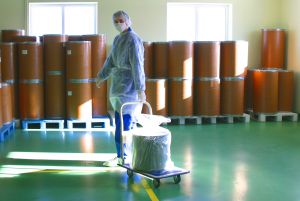The risk of Massachusetts work accidents caused by hazardous chemicals was highlighted by a forum this fall held by the Occupational Safety & Health Administration, which aims to update exposure reduction strategies and other safety measures.
Serious or fatal injuries caused by hazardous chemical exposure are among the most complex work injury cases handled by our Massachusetts workers’ compensation lawyers. While some cases result from a chemical spill or work accident, many other cases result from the impact chemical exposure has on an employee over a long period of time.

OSHA reports that many of the government safety agency’s 400 permissible exposure limits (PELs) date to the agency’s founding a half-century ago. The government has implemented more protective regulations on only about 29 chemicals.
“Many of our permissible exposure limits are based on 1950s-era science that we now realize is inadequate to protect workers in 21st century workplaces,” said Assistant Secretary of Labor for OSHA David Michaels. “We must assure the protection of workers currently exposed to well-recognized chemical hazards for which we have an inadequate PEL or no PEL at all. I am hopeful that this forum will assist us in achieving that goal by helping us to identify those chemicals on which we should be focusing our efforts.”
Exposure to harmful chemicals in the workplace can damage virtually all parts of the body, including lungs, skin, liver, kidneys and eyes. The Bureau of Labor Statistics reports that 55,000 workers suffered illnesses related to chemical exposure in the workplace in 2007 — though the government knows that estimate does not begin to account for those injured by chemical exposure that will not present physical symptoms for years or decades to come.
Massachusetts work accidents caused by exposure to harmful chemicals or environments claimed 11 lives last year — another 7 employees died as a result of fires or explosion.
Continue reading
 Boston Personal Injury Attorney Blog
Boston Personal Injury Attorney Blog



